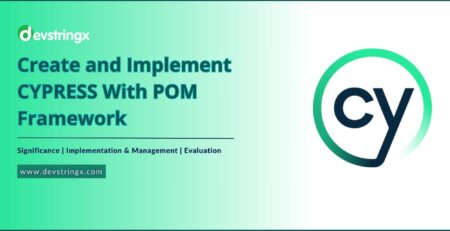Performance Testing in DevOps and Agile : Best Practices
Performance Testing in DevOps and Agile
Agile and DevOps methodologies have become essential for the speedy delivery of software, as they prioritize integration, continuous delivery, and collaboration among cross-functional teams to ensure top-notch software products. While Agile and DevOps excel at speeding up the development process, it is equally crucial for them to maintain performance quality under pressure. It is where performance testing comes into play in Agile and DevOps, ensuring that the software performs optimally, even as it evolves rapidly.
Importance of Performance Testing
Performance testing plays a significant role in the software development lifecycle by evaluating how a system behaves under diverse conditions and workloads. It helps identify bottlenecks, scalability issues, and performance degradations so that teams can proactively address these concerns before they affect end users. In Agile and DevOps environments, the significance of performance testing is magnified. With integration and delivery changes frequently deployed to production, any decline in performance can result in customer dissatisfaction, downtime, or even financial losses. To be precise, effective performance testing is crucial in ensuring that each new release performs at least as the previous one, if not better. It contributes to the stability of the product and enhances user satisfaction.
Best Practices in Performance Testing in DevOps
Integrating performance testing into Agile and DevOps processes requires an approach. Here are some best practices to consider:
1) Early Involvement
Performance testing should be a part of the development process right from the beginning. It is vital to involve performance engineers and testers during project planning to understand the performance requirements and objectives. This early involvement helps establish performance goals that align with the project objectives.
2) Clearly Define Performance Goals
Before conducting any performance testing, it is essential to define clear and measurable performance goals. These goals should align with business objectives to meet user expectations. For instance, it is crucial to ensure that the application can handle several users without experiencing any degradation in performance or guaranteeing specific response times.
3) Continuous Testing
In Agile and DevOps, environment testing should be continuous and seamlessly integrated into the CI/CD pipeline. By implementing automated performance tests that can run with every code commit or pipeline build, you ensure that performance is evaluated at every stage of development. It allows for the detection and resolution of any issues related to system performance.
4) Scalability Testing
Ensuring scalability is crucial for applications in cloud-native environments. It’s important to conduct scalability testing to assess how well the application performs under workloads. It facilitates resource allocation optimization and ensures that the system can handle increasing workloads as the user base expands.
5) Realistic Test Data and Scenarios
For performance testing, it’s essential to use data and scenarios. Consequently, it is recommended to simulate user behaviors, including user flows, transactions, and data volumes, to acquire accurate results. The closer our tests mirror real-world usage patterns, the more insights we can gain.
6) Performance Monitoring in Production
Performance testing doesn’t stop once the application is deployed. Implementing continuous performance monitoring helps us track system performance in time. It enables us to detect and address any performance issues that may arise under conditions or over time.
7) Collaboration and Communication
Needless to say, effective communication and collaboration among functional teams play a vital role here. Performance testers, developers, and operations teams must work closely together while they analyze test results, identify performance bottlenecks, and implement optimizations. It is crucial to emphasize that regular stand-up meetings with appropriate records facilitate an effortless collaboration process.
8) Treating Performance as a Non-Functional Requirement
It’s important to treat performance as a functional requirement similar to security, scalability, and reliability considerations. For instance, you can treat performance requirements with the same importance as requirements, ensuring they are integral to defining the completion criteria for each user story or feature.
9) Early Performance Testing
It is recommended to integrate performance testing earlier in the development cycle through a “shift left” approach. Developers can utilize performance testing tools and techniques during development to identify issues before they escalate. This step helps reduce the cost and effort of addressing performance-related defects in the cycle.
10) Continuous Optimization
Optimization is an ongoing process. Accordingly, it is significant to continuously optimize application performance based on real-world usage patterns and feedback from end users. This iterative approach ensures that the software maintains its performance as it evolves.
Good to Read- Load and Performance Testing Tools for Web Applications
Tools for Agile and DevOps Performance Testing
To effectively implement these practices, it is essential to have appropriate tools at hand. Here are some popular performance testing tools suitable for Agile and DevOps environments:
1) Apache JMeter
Apache JMeter is an open-source tool that facilitates load, performance, and functional testing. It features a user interface and supports various protocols, making it versatile for conducting comprehensive performance tests.
2) Gatling
Gatling is another open-source tool specially designed for load testing and performance testing purposes. It utilizes a Scala-based DSL and is renowned for its performance and scalability, making it well-suited for testing applications that experience high volumes of traffic.
3) Apache Benchmark (ab)
Apache Benchmark, often referred to as “ab,” is a command line tool that accompanies the Apache HTTP server. It boasts user functionality and is suitable for conducting rudimentary load testing and benchmarking of web applications.
4) New Relic
New Relic is a platform dedicated to performance monitoring and optimization, delivering real-time insights into application performance. Integrate this tool into your CI/CD pipeline to monitor and optimize application performance.
5) AppDynamics
AppDynamics is an application performance management (APM) solution, designed to monitor performance. It offers visibility throughout the application, empowering teams to identify and resolve performance-related issues.
Conclusion
Integrating performance testing into Agile and DevOps processes plays a role in delivering top-notch software that aligns with user expectations. Adherence to practices like involvement, ongoing testing, and fostering collaboration teams ensure that rapid development doesn’t compromise overall performance. Remember that performance testing isn’t a one-off task but a consistent effort. Therefore, strategies such as monitoring, optimizing, and utilizing suitable performance testing tools are essential for developing a performance testing strategy.
By giving importance to performance and functional requirements and adopting a mindset of optimizing performance, organizations can develop software that achieves business objectives and offers an outstanding user experience. It is important to note that performance testing goes beyond being a checkbox; it ensures software success in the Agile and DevOps era.
Hire Top-rated performance test engineers from Devstringx to enhance the performance of your product & keep it stand out from the market.














